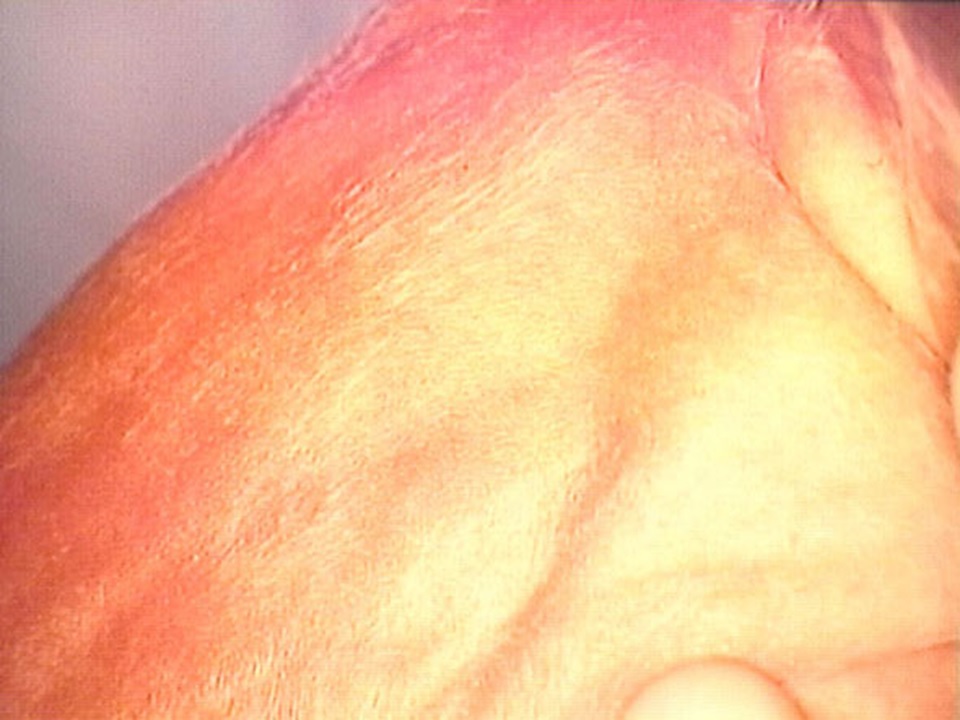Lanugo Assessment using the Ballard Score
Lanugo is the fine hair covering the body of the fetus.
In extreme immaturity, the skin lacks any lanugo. It begins to appear at approximately the 24th to 25th week and is usually abundant, especially across the shoulders and upper back, by the 28th week of gestation.
Thinning occurs first over the lower back, wearing away as the fetal body curves forward into its mature, flexed position. Bald areas appear and become larger over the lumbo-sacral area. At term, most of the fetal back is devoid of lanugo, i.e., the back is mostly bald.
Lanugo Contributing Factors
Variability in amount and location of lanugo at a given gestational age may be attributed in part to familial or national traits and to certain hormonal, metabolic, and nutritional influences. For example, infants of diabetic mothers characteristically have abundant lanugo on their pinnae and upper back until close to or beyond full-term gestation. When scoring for lanugo, the examiner selects the square that most closely describes the relative amounts of lanugo on the upper and lower areas of the infant's back.

Lanugo Score
| SIGN | PHYSICAL MATURITY SCORE |
SIGN
SCORE |
||||||
| -1 | 0 | 1 | 2 | 3 | 4 | 5 | ||
|
Lanugo |
none | sparse | abundant | thinning | bald areas | mostly bald | ||
Page 1 of 1